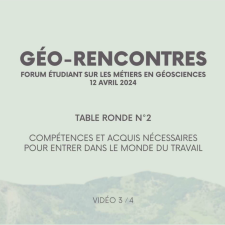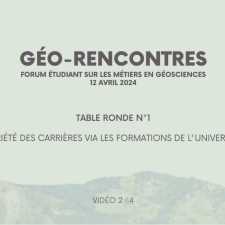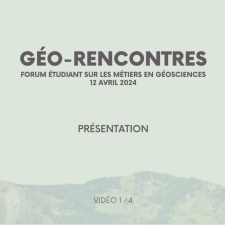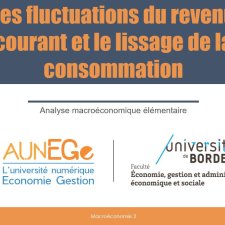Notice
Climate, Geography and Macroeconomics: Revised Data, Refined Analysis and New Findings
- document 1 document 2 document 3
- niveau 1 niveau 2 niveau 3
Descriptif
Assessments of social and economic impacts of climate change are primarily based on the results of biophysical climate impact models, which are aggregated, extrapolated and/or valued in monetary terms. Another potential source of information on climate impacts are spatial and/or temporal analogues, such as Ricardian analysis of climate impacts on agriculture. Another recent effort to this end involves the development of the G-Econ database (Nordhaus, 2006), which describes the relationship between climatic and geographic factors on the one hand and regional economic productivity on the other. A multivariate regression derived from this database has been used to estimate global economic impacts of climate change in a recent version of the DICE model. The reanalysis presented here was motivated by some counterintuitive results in Nordhaus (2006). I have developed a modified version of the GEcon database, which corrects several inconsistencies in G-Econ, and which is available at two different spatial resolutions (grid cells and subnational administrative units). This database is applied to reanalyze key results in Nordhaus (2006) and to perform additional analyses, focussing on the influence of climate on population density, density of economic output, and output per capita. I discuss the implications of several statistical problems in the G-Econ data (skewness, heteroskedasticity, excess zeros, different weights of data points, different spatial resolutions of predictors and predictands) for statistical analysis and assess the sensitivity of results to variations in statistical estimators, aggregation units, and weighting schemes. This reanalysis finds that the counterintuitive results in Nordhaus (2006) can be largely explained by flawed methods for data aggregation and analysis, and by incomplete data in the G-Econ database. Given that several statistical problems have been inadequately addressed by Nordhaus (2006), the validity of estimates of global climate impacts based on G-Econ remains doubtful.
Intervention / Responsable scientifique
Dans la même collection
-
The Start and the End of Our Interglacial
BergerA.The previous interglacial (Marine isotope stage 5e, peaking at 125 kyr BP) is usually assumed to be a good analogue for our present-day climate. Moreover, as our present interglacial, the Holocene, is
-
Cross-Disciplinary International Research on Land-Atmosphere Interactions
ReissellAnniThe presentation will focus on scientific issues of importance to global change and climate change research: interactions of reactive trace and greenhouse gases between the biosphere and atmosphere in
-
Regional Climate Change and Extremes
DéquéMichelGlobal coupled ocean-atmosphere models, driven by greenhouse gas concentrations according to several hypotheses for the next century, have been used in the last IPCC-AR4 report to depict possible
-
Industrial and Environmental Policies: Reciprocal Impacts
ChauvinDominiqueTotal as a key player of the Oil and Gas industry is providing answers to 25 environmental challenges. In that respect, it has already developed environmental objectives and policies. Its
-
Post-2012 options to Reduce Greenhouse Gas Emissions
DuvalRomainThe presentation will focus on post-2012 options to reduce greenhouse gas (GHG) emissions, putting special emphasis on the need to abate world emissions. The presentation will focus on post-2012
-
The Intergenerational Equity: A Concept to Build for Sustainability, the Case of Global Warning
DjédjéOkoubi Franck DidierDefined as “the relation that each generation has with the last or future generations in the use... of the natural or cultural resources of planet”, Intergeneration equity (here I.E) imposes rules of
-
Round Table
JoussaumeSylvieChanzyAndréSomervilleRichardDuvalRomainThe European Science Foundation (ESF) and the French Foundation of the Maison des Sciences de l’Homme (FMSH) (within the Entre-Sciences programme) have agreed to jointly develop a new conference
-
Comparison of Simulated Tree-Ring Cellulose d180 at the European Scale
DanisPierre-AlainIn order to investigate factors involved in the inter-annual variability of d180 in tree ring cellulose (d18OTRC), we simulated the d18OTRC from 1960 to 2001 over Europe. We used 1) simulated climate
-
Borehole Climatology and Model Simulations: Steps to Integrated Assessment
Gonzales RoucoJesus FelipeProgress in understanding climate variability through the last millennium leans on simulation and reconstruction efforts. Exercises blending both approaches present a great potential for answering
-
Food demand, Productivity Growth and the Spatial Distribution of Land and Water use: A Global Model…
PoppAlexanderNowadays, human society appropriates about one quarter of total net primary production of the terrestrial biosphere. Production of food, energy and materials, and the related use of land and water
-
Social Impact of global Environmental Change on Farming Communities on the Ogoli River Bank in Otuk…
Anjeinu AbuGodwinOne of the manifestations of the global change in this study area is a marked reduction in the duration and amount of rainfall. This adversely affects the volume of the head waters that ultimately
-
How to Foster the Economic and Societal Technical Solutions?
CallonecGaëlThe presentation will focus on the interplay between economic scenarios (based on energy demand and CO2 emission reduction) with long run-public policies. The French case will be discussed in more
Sur le même thème
-
Géo-Rencontres 2024 / Les expériences valorisées dans le monde professionnel
LilloEmmaAraujoJulieHuartFlorianDubreuRomainBuquetDamienChazalLauraBorieMarianeForum sur les métiers en géosciences organisé par les étudiants du CMI Ingénierie Géologique et Civile, Université de Bordeaux, 12 avril 2024
-
Géo-Rencontres 2024 / Compétences et acquis nécessaires pour entrer dans le monde du travail
BrinonJulietteAmoleFili-FenuaPretouFrédéricCampetHugoLiébauxAlbinDe AlemeidaMarie-LouPoirierAymericDufrenoyAudreyForum sur les métiers en géosciences organisé par les étudiants du CMI Ingénierie Géologique et Civile, Université de Bordeaux, 12 avril 2024
-
Géo-Rencontres 2024 / Variété des carrières via les formations de l'université
InguimbertDianeLacazeRomaneLemaitreLaurieChazalLauraMontjeanPascalPoudevigneJacquesPortefaixFrédéricForum sur les métiers en géosciences organisé par les étudiants du CMI Ingénierie Géologique et Civile, Université de Bordeaux, 12 avril 2024
-
Géo-Rencontres 2024 / Présentation
LatasteJean-FrançoisLavieThéoForum sur les métiers en géosciences organisé par les étudiants du CMI Ingénierie Géologique et Civile, Université de Bordeaux, 12 avril 2024
-
Tokyo, plus grande « ville » au monde : aménager et gouverner la démesure
Languillon-AusselRaphaëlAvec ses quelques trente-cinq millions d’habitants, Tokyo est la « ville » la plus peuplée au monde, et l’une des métropoles les plus riches. Cette présentation vise à décrire, analyser et expliquer,
-
Les fluctuations conjoncturelles de l’activité
Maveyraud-TricoireSamuelLes fluctuations conjoncturelles de l’activité
-
Les fluctuations du revenu courant et le lissage de la consommation
Maveyraud-TricoireSamuelLes fluctuations du revenu courant et le lissage de la consommation
-
L'origine des fluctuations de la demande
Maveyraud-TricoireSamuelL'origine des fluctuations de la demande
-
L'approche par la dépense du PIB et les grandes fonctions macroéconomiques
Maveyraud-TricoireSamuelL'approche par la dépense du PIB et les grandes fonctions macroéconomiques
-
-
-














